Fairytale and real Princesses
Almost every little girl dreams of becoming a princess in childhood, and we, the parents ourselves, instill this desire in our beloved daughter by reading her fairy tales about princesses, buying her the best and dressing her like a little doll. But one thing is fairy-tale princesses, whose images remain in memory forever, and another thing is real princesses, their lives, morals, customs and traditions. Let's talk today about whether it is really such a great happiness to be born a princess?
The crown is a symbol of monarchical power.
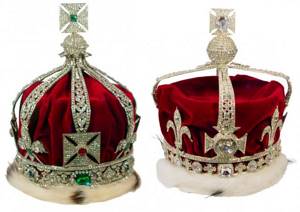
Listening to our favorite fairy tales from childhood, we usually create in our thinking the same standard stereotype: a princess is the best and most beautiful girl who dresses in the most beautiful dresses, eats the most delicious food (in the minds of children - only sweets and cakes), she plays and has fun every day, and when she grows up, she definitely gets the greatest love of the best prince in the world. Having firmly rooted this image of an ideal life in her soul, every girl secretly dreams of becoming a real princess, living a long and happy life, the main event of which will be incredible love with none other than a handsome prince on a white horse. The tall dark tower, in which, according to the plot, the princess is often imprisoned by her compassionate father is somehow forgotten, and in dreams only the image of the brave prince remains. He will certainly find her, will come very soon and will definitely take her to him. Very soon, you just need to wait a little more, and... She will become the happiest girl in the world, a real princess from a fairy tale! However, in life, often, everything turns out completely differently, or not quite like that, and the truth is that the fate of real princesses is far from being so cloudless and beautiful.
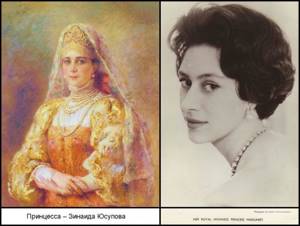
Let's start with the fact that a girl who was born a princess was taught from childhood by everyone around her that she was the chosen one. This feature imposed not so much tempting pleasures as, above all, strict responsibilities. The little princess had to be a model in everything - in studies, behavior, appearance and, especially, in the rules of etiquette. Every day, the young princess was faced with hundreds of small responsibilities, which grew along with the increase in her age. She had to study well under the strict supervision of a crowd of mentors and educators, communicate only with people chosen for her, dress every day in beautiful, but mostly terribly uncomfortable dresses for a small child, and attend long and tedious official ceremonies with her parents from an early age. . It was not about any freedom - from childhood, the young princesses tried to develop such character qualities as humility and obedience, endurance and inner restraint, even if at times it became very difficult for them. The daughter of the ruler of the state in any situation had to be good - well-mannered, witty, beautiful and regal, because she was a true adornment of the royal court. The external reputation of the state and profitable connections with other countries depended on this - in the modern concept, this position of the girl could be called the “face of the company”, and therefore, the stupid and ill-mannered princess was, in theory, of no use to anyone.
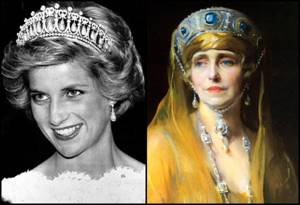
Diana, Princess of Wales and Mary of Edinburgh.
This is evidenced by a historical incident when the ambassador of King Louis 15 went to choose a future wife for his monarch. Initially, the choice fell on the Spanish princess, Infanta Isabella, famous throughout the world for her beauty. On the long journey, the envoys stopped to rest with the Polish king, who gave them a sparse, but warm and sincere welcome. Upon arrival at the Infanta's court, the ambassador, having observed her, soon noticed that she was extremely ill-mannered and cruel - the spoiled beauty Isabella treated her servants terribly, beating an old, gray-haired, devoted court servant in the face with a shoe. Seeing this, the wise ambassador of Louis 15 thought about it, and upon returning to France, he told his king about it. At the same time, he mentioned an equally young Polish princess who, while honoring the guests, knelt down to tie the shoe strap of her sick father. After thinking about both girls, Louis 15 made a choice in favor of... the Polish princess! It was to her that matchmakers were subsequently sent, and soon, Princess Mary became the wife of the French king, and the Spanish beauty Isabella was left with nothing.
Princess – Tatyana Alexandrovna Yusupova and Emperor Nicholas II, Tsarina Alexandra and Princess Elizabeth.
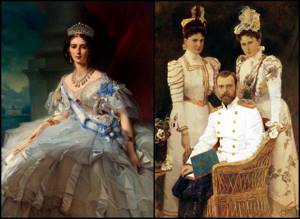
Princesses and fashion.
In addition to strict upbringing, court fashion caused great inconvenience to the little princesses. There were no children's clothes in those days (they only appeared at the beginning of the 19th century), and girls were forced to wear adult clothing that differed only in the size of the dress, with tight corsets and other details inappropriate for a child. In such outfits they looked just like little adults, and often the moral demands placed on them were almost the same.
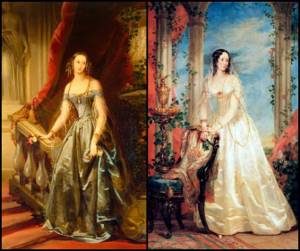
Any princess also had to know the Holy Scriptures perfectly,, together with adults, follow all the religious laws established in the state, and in the event of marriage, she was obliged to study all the morals, customs and religion of the country where she was to live in the future. Thus, owning two cultures at the same time, the princess became the so-called connecting link between them and contributed to the strengthening of international ties. She also had to give her ruling husband a child heir, and this, unfortunately, was where her marital responsibilities often ended.
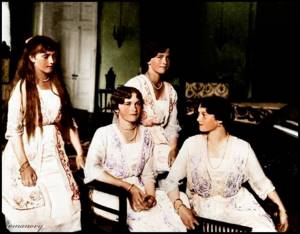
Family of Nicholas II, little princesses.

This was due to the fact that in almost every case, there was absolutely no talk of any love - the princess’s marriage was, first of all, a political union and should, first of all, bring benefits to the state. Personal sympathies, to some extent, were still taken into account, but did not play a fundamental role. Often, young princesses, married at the age of 13-14, were completely unhappy in their marriage - their autocratic husbands forgot about them, having fun in their free time with beautiful courtesans, and the queen’s lot remained charity and the official “appearance” of the monarch’s wife. However, if the marriage had not taken place, an even more unimpressive fate could have awaited her - leaving for a monastery, and therefore, the young princesses, having become queens and having experienced the first disappointments from her husband’s infidelities, slowly, secretly from the royal court, established their own personal lives and own affairs. Being a queen was already much more interesting - many of them had several thousand dresses in their wardrobe, a huge amount of expensive jewelry, they could enter into secret love affairs and receive guests, while the expenses, activities and entertainment of unmarried princesses were, as a rule, , are much more modest and limited.
Grace Kelly - Princess of Monaco
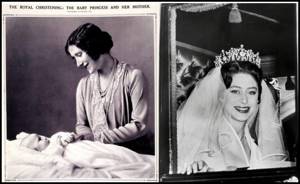
Princess Margaret
Several cases from history tell about successful love in the destinies of princesses (for example, the marriage of the beautiful Princess Wilhelmina and the Russian Emperor Alexander 2 was concluded for love), but despite this, their happiness never lasted. The reason for this was political intrigue, the royal spouse’s infatuation with one of the many women around him, or simply the inability to marry a loved one due to the need to constantly maintain the status of a princess (queen) throughout his adult life.
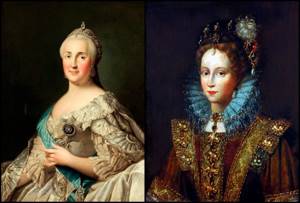
Queens - Catherine the Second and Elizabeth the First
Such is the life of princesses, which, despite all the delights and temptations of the royal court, often passed in solitude, studying and handicrafts, worries and responsibilities. Mutual love arose quite rarely in their lives, and the happiness of marriage became a quickly passing routine. Of course, everything happened in their destinies - intrigue, lovers, entertainment and pleasure (there is an opinion that the lovers of the young princess Margot were her own brothers). But the first place in the life of modern princesses has been and continues to be occupied by strict canons, rules and duties, because the burden of a “model girl” is not so light. And all we can do is keep in our memory the dear, beloved, magical and such beautiful images of fairy-tale princesses from childhood.
Princess Maria Olympia

Picture taken from YouTube
The eldest heir to the monarchs of Greece does not speak her native language. She was born in New York, then moved to England with her brothers. Maria studied at a private Swiss school. The girl is interested in photography and theater. In 2020, the princess entered the Fashion Institute in New York. Teachers are confident that the talented and purposeful Maria will certainly achieve success in the fashion industry. By the way, several of her photographs have already graced the covers of glossy magazines.
Princess Charlotte Casiraghi

Picture taken from YouTube
The granddaughter of monarch Grace Kelly was born into the family of businessman Stefano and Princess Caroline of Monaco. The girl was brought up according to all the rules of royal etiquette. She speaks three languages, rides well in the saddle, graduated from the Sorbonne and is actively involved in charity work.
Charlotte also got a job as a reporter for the Independent (London). But equestrian sports brought real fame to the girl; the beauty participated in international competitions. The princess was the face of the Gucci brand; the popular brand created exclusive equipment for the monarch.
Charlotte does not like social gatherings and ignores royal honors. Instead of noisy parties, she prefers quiet horseback rides. And the princess did not choose her wife from among the aristocrats; her husband was the actor Gad Elmaleh. The lovers refused the wedding celebration and lived in a civil marriage for a long time. The couple had a son, Rafael, but in 2020, Gad and Charlotte separated.
Must study foreign languages
Princess Charlotte, like her brothers, is required to know several foreign languages. At just three years old, the girl, in addition to her native English, already speaks Spanish. The baby is taught by her nanny, a native of Spain, Maria Borello.
In the future, Charlotte will also master French, which her great-grandmother, Queen Elizabeth II, speaks fluently.
According to unconfirmed information, the princess’s parents, the Duke and Duchess of Cambridge, can also speak French well. Like it or not, the princess will have to “memorize” other foreign languages - she will need this knowledge in the future, when she attends meetings with foreign delegations.










